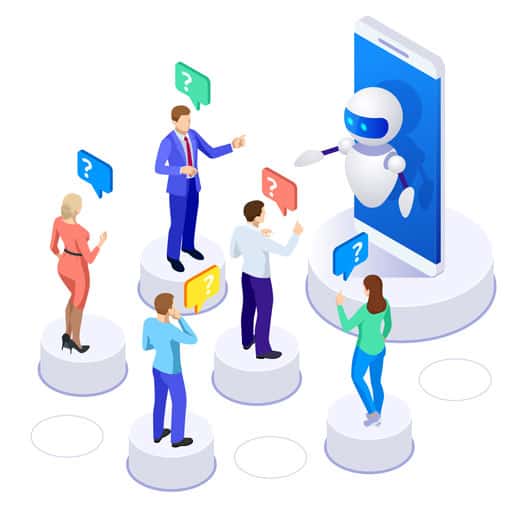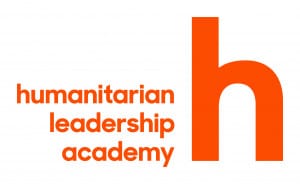Masterclass Webinar
Gamification, VR and Chatbots
How to use new technologies to create immersive online learning?
Join our Masterclass Webinar to see how the humanitarian sector has used gamification, VR and chatbots for creating highly immersive online learning with role-playing, storytelling, scenarios, peer-to-peer feedback and simulation exercises.

View Recording
View this session with Atish Gonsalves, Global Innovation Director, to see how the humanitarian sector has used game-based learning, VR and chatbots for creating highly immersive online learning with role-playing, storytelling, scenarios, peer-to-peer feedback and simulation exercises. The session will highlight some case studies and practical tools to increase human engagement in innovative, online learning at your organization. The session will also cover how to use design thinking and co-creation to develop learning with end-users.


Atish Gonsalves | Global Innovation Director | Humanitarian Leadership Academy
Atish Gonsalves is a social technologist, entrepreneur and the Global Innovation Director of the Humanitarian Leadership Academy. With a background in software engineering, AI and human-computer interaction, Atish’s experience includes leadership roles at technology and international non-profit organizations. Atish has consistently implemented successful educational-technology (ed-tech) solutions that have helped democratize learning for thousands of learners in difficult contexts. Atish is also the founder of Gamoteca, a collaborative digital platform that enables organizations to create their own mixed-reality learning games.
The Humanitarian Leadership Academy
The Humanitarian Leadership Academy (the Academy) is a global learning initiative with a mission to enable people to prepare for and respond to crises in their own countries. To achieve this, the Academy acts as a catalyst for the improved quality, accessibility and sustainability of humanitarian learning. They support the development and recognition of skills through our platforms, products and services, so that humanitarian work is more effective, immediate, and local – saving lives and safeguarding livelihoods. HLA has established a global network that assesses local needs and work with partners to develop tailored learning, training and knowledge packages. Their free online learning platform, Kaya, currently provides training to 150,000 humanitarian volunteers and professionals. Read this leaflet to find out more about them. You can also visit their website and create your free Kaya account and start a course.

You might also be interested in
What Does Gamification Mean?
Back in 2014, Gartner sought to define gamification as “the use of game mechanics and experience design to digitally engage and motivate people to achieve their goals”.
Wikipedia also defines Gamification as “the application of game-design elements and game principles in non-game contexts”. Gamification can also represent a set of activities and processes aimed at solving problems with the use or of game elements. As a problem-solving strategy, gamification plays a significant role in learning and development. This way of learning commonly employs game design elements to improve user engagement, organizational productivity, employee recruitment, and evaluation.
How Does Gamification Work?
Gamification works by providing bits of information in a form similar to games. By taking something that is not a game and applying game-like features to it, gamification leads to higher learning retention rates, higher user engagement and an overall positive attitude towards something that could otherwise be perceived as boring.
Gamification can be used in many areas of our lives – from improving our performance in the gym to increasing sales staff performance, improving customer retention, driving organizational engagement and loyalty, and increasing productivity.
What Are Chatbots?
Chatbots are one of the innovative marketing tools making its way in the market in the past few years. With the rise of social media and chatting tools, many companies are now turning to chatbots to automate some of their communication with customers and prospects.
Chatbots are computer programs that can respond to texts or digital chats, effectively carrying on quasi-conversations with visitors of a website. Thanks to advances in Natural Language Processing (NLP) and Artificial Intelligence (AI), these bots have stronger conversation abilities than ever before.
Can VR Revolutionize Learning?
In the past few years, VR has been one of the hot topics of discussion for many professionals in learning and education. Beyond the appeal of VR as a fun and futuristic tool, according to scientists from the University of Maryland’s College of Computer, Mathematical & Natural Sciences, people recall information better if it’s presented to them through VR compared to computers or mobile devices. As an alternative to traditional means of learning, subjects taught through an interactive and virtual space also lead to an increase in engagement, concentration, comprehension, and satisfaction.
How Can Chatbots Helps Business?
As online retail of products and services continues to rise, more and more people seek fast and direct communication with brands and organizations. Chatbots that integrate with a company’s website or social media channels have the ability to respond to some of the most frequent questions asked by clients. This enables organizations to reduce manpower needed in customer service, improve reaction times and provide overall better customer care. When used in L&D, chatbots enable learners to find quick and relevant answers to their questions – making it easier to keep a smooth learning path and make better progress.

